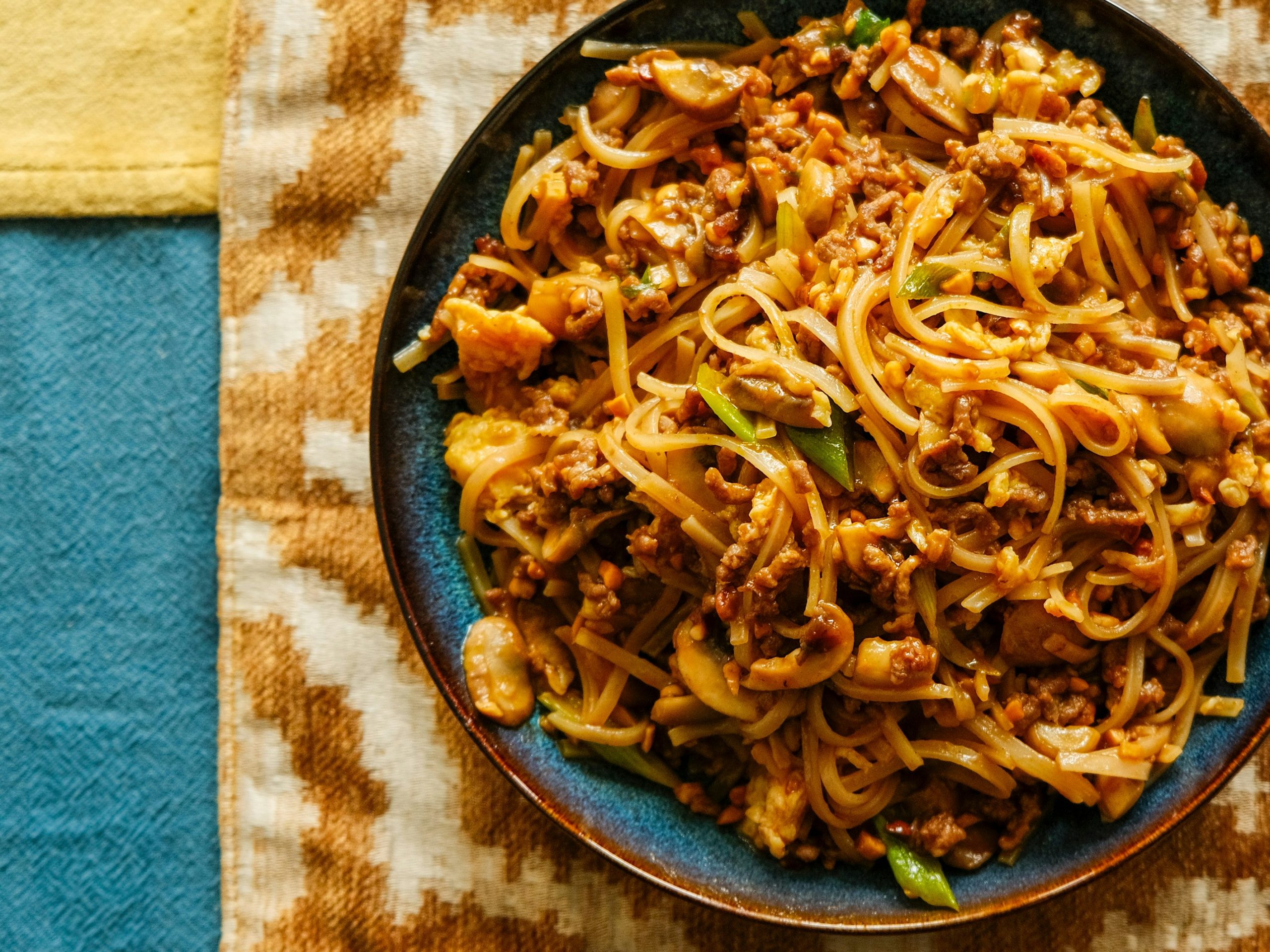Sustainable Cooking: Embrace Eco-Friendly Recipes for a Greener Kitchen
You know, I was rummaging through my kitchen the other day, looking for a snack—probably something I shouldn’t have been snacking on, but hey, who’s judging? (I certainly wasn’t.) As I opened the fridge, I was met with the slightly sad sight of half-empty containers, wilted veggies, and an ancient jar of pickles that probably predate the last time I went to the dentist. It got me thinking about food waste and how, in our rush to whip up quick meals, we often overlook the impact our choices have on the planet. That’s when the lightbulb went off (cue the dramatic music)—what if I could turn this chaotic kitchen into a green machine? Cue the sustainable cooking revolution!
Why Sustainable Cooking?
Now, you might be wondering, “What’s the big deal with sustainable cooking?” Honestly, it’s all about making choices that are good for our taste buds and the Earth. Sustainable cooking focuses on using seasonal, local ingredients, reducing waste, and minimizing our carbon footprint. It’s about being mindful of what we consume and how it affects the environment. If we can make our meals not just delicious but also eco-friendly, isn’t that a win-win? (I mean, who doesn’t love a good win-win scenario?)
Plus, think about it: by embracing sustainable recipes, we can tap into a treasure trove of flavors. Fresh, in-season produce tastes better than anything you’ll find in a can or frozen aisle. And don’t get me started on the satisfaction of knowing that you’re doing your part to help Mother Earth. It’s like giving her a warm hug every time you cook—who wouldn’t want to do that?
Let’s Talk Ingredients
So, what does sustainable cooking really look like? Well, the first step is sourcing ingredients. It’s all about going local. Farmers’ markets are a fantastic place to start (seriously, if you haven’t been to one, you’re missing out). Not only do you get to support local farmers, but you also get to chat with them about their produce. You might even discover that heirloom tomatoes can be a thing of beauty (and trust me, they taste a million times better than the regular ones). Plus, shopping local means less transportation, which equates to fewer emissions. And who doesn’t want to lower their carbon footprint while picking up some juicy fruits and veggies?
Another thing to consider is seasonality. Eating in season doesn’t just help the planet; it helps your wallet too! Think about it: when you buy strawberries in the middle of winter, you’re not just breaking the bank; you’re also contributing to a system that relies on long-distance shipping and cold storage. Instead, why not try cooking with winter squash or root vegetables when they’re in season? They’re hearty, versatile, and they can be transformed into countless delicious dishes. (And let’s be honest, they’re a lot more fun to carve than that pumpkin you bought for Halloween.)
Waste Not, Want Not
Now, onto the topic of food waste. Ah, the dreaded leftover problem. I’ve noticed that many of us have this habit of cooking way more than we actually need. I mean, we’ve all been there, right? You throw in a handful of pasta only to realize that you’ve created enough to feed a small army. But instead of letting that food go to waste, let’s get creative! Leftover pasta can easily be turned into a delicious frittata, or you can toss it in a salad for a quick lunch the next day. And those wilted veggies? They’re perfect for a hearty soup or stir-fry. Just think of them as the vegetables that are ready for their second act! (Trust me, they’ll appreciate the chance to shine.)
Eco-Friendly Cooking Techniques
Alright, let’s dive into some eco-friendly cooking techniques. One of my favorite methods is batch cooking. Not only does it save time during the week, but it also helps reduce energy consumption. I remember one Sunday, I got a wild hair and decided to make a week’s worth of meals. I whipped up a big pot of chili, roasted a tray of seasonal veggies, and even baked some oatmeal cups for breakfast. By the end of the day, my fridge was stocked with delicious, ready-to-eat meals, and I felt like a sustainable superhero! (Cape optional.)
Another technique that I’ve found super handy is using a pressure cooker. You can whip up meals in a fraction of the time and use less energy compared to traditional cooking. Plus, it’s the perfect way to turn dried beans into creamy deliciousness without spending hours babysitting a pot on the stove. (And let’s be real, who has time for that?)
Eco-Friendly Recipe Ideas
Now, onto the fun part—recipes! Here are a few eco-friendly dishes that you can whip up in your own kitchen:
1. Seasonal Vegetable Stir-Fry
Grab whatever seasonal veggies you can find (think bell peppers, zucchini, and broccoli) and toss them in a hot pan with some olive oil, garlic, and ginger. Sauté until tender and serve over brown rice or quinoa. It’s quick, healthy, and can be customized based on what you have on hand. (Bonus points if you use leftovers!)
2. Hearty Lentil Soup
Lentils are a powerhouse of nutrition and perfect for using up those slightly sad vegetables lurking in your fridge. Sauté onion, carrots, and celery, then add lentils, vegetable broth, and your favorite herbs. Let it simmer until everything is tender. It’s like a warm hug in a bowl, and it freezes beautifully for future meals!
3. Zero-Waste Smoothie
Got some overripe bananas and a handful of spinach? Blend them up with some yogurt or almond milk for a nutrient-packed smoothie. (And if you can’t finish it all, pour it into ice cube trays and freeze for a smoothie later—waste not, want not!)
4. Stuffed Bell Peppers
Use leftover grains and veggies to stuff bell peppers. Just hollow them out, fill with your mixture, top with cheese if you’re feeling fancy, and bake until the peppers are tender. It’s a colorful and satisfying meal, plus it’s a great way to use up what’s in your fridge!
Cooking with Mindfulness
Embracing sustainable cooking isn’t just about the food; it’s also a mindset. When cooking, take a moment to appreciate the ingredients. Smell the fresh herbs, admire the vibrant colors, and enjoy the sounds of chopping and sizzling. This mindfulness transforms cooking from a chore into a joyful experience. (And who doesn’t need a little more joy in their life?)
I’ve found that when I cook with intention, I’m more likely to savor my meals, waste less food, and feel more connected to what I’m eating. It’s a simple yet powerful shift that can make a world of difference.
Conclusion: Small Changes, Big Impact
So, as you venture into the world of sustainable cooking, remember that it’s the little changes that count. Whether it’s shopping at your local farmer’s market, reducing food waste, or trying out a new eco-friendly recipe, every action adds up. And who knows? You might just find that cooking sustainably brings a whole new level of flavor and joy to your meals.
Next time you’re in the kitchen, take a moment to reflect on your choices. You’re not just cooking for yourself; you’re cooking for the planet too. And if you happen to turn out a delicious dish in the process, consider that a delightful bonus. Happy cooking, eco-warriors! (Now, if you’ll excuse me, I have some leftover chili that’s calling my name…)




